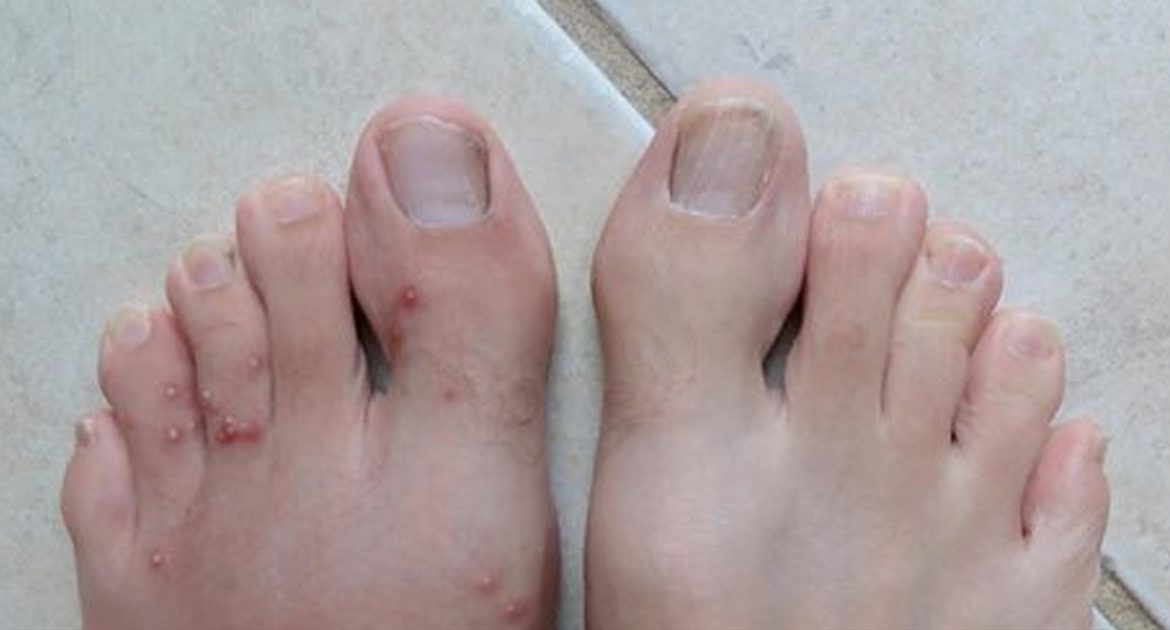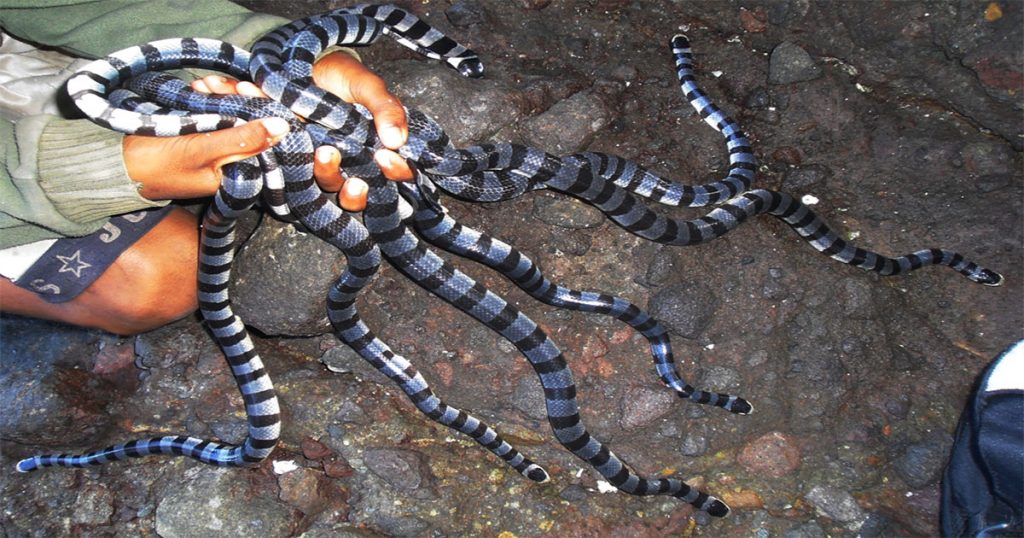Those of us who live in a four-season climate spend all winter dreaming of summertime.
Winter is great for a little bit — we all understand where Tian Tian the panda is coming from with his blizzard antics — but most of us are ready for it to be over around mid-January.
That said, we do romanticize summer a little bit when we’re missing it most. It can be easy to forget at the height of the winter blues, but that sun-and-surf lifestyle we’re lusting after comes with just a few minor deterrents.
Chief among them, if you ask me, is the sudden and uninvited onslaught of insects.
Yes, I know they’re good for the garden and the environment, and all of that is fine with me. I don’t care what bugs do, as long as it doesn’t involve eating me.
Alas, that seems to be one of their very favorite pastimes. As a result, I often spend the warmer months trying to figure out what, exactly, bit me, and whether I need to be concerned about it.
In that spirit, here is my guide, borne of hard-earned experience, to common bugbites and what gave them to you. May it keep you happy and itch-free all summer long!
1. Fire Ants
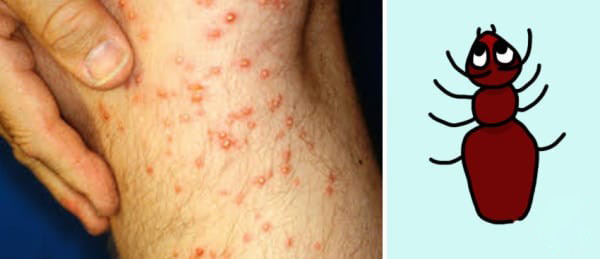
If you grew up in the Southeast, you know already that fire ants are the worst.
Like their milder cousins, the red ants, fire ants deliver a stinging bite, but they earned their spicier name from the intense pain of their bites.
You will probably know immediately if you have received bites from these creepy-crawlies, but the dead giveaway is a painful, itchy red rash that looks like a bad breakout, often on your legs or rear.
Too many bites can result in an allergic reaction, so watch out for hives and difficulty breathing.
2. Black Widow Spider
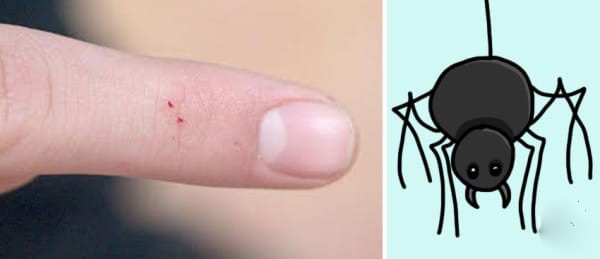
The black widow is one of the most notorious spiders around, though they aren’t necessarily as dangerous as their reputation suggests.
They leave a bite of two small puncture wounds, like a very tiny vampire bite. Afterward, the toxins may cause muscle pain and swelling.
Medical action should definitely be taken, but don’t panic, this type of bite is almost never life-threatening, and rarely causes permanent damage.
If treated, most people recover within 24 hours.
3. Tick
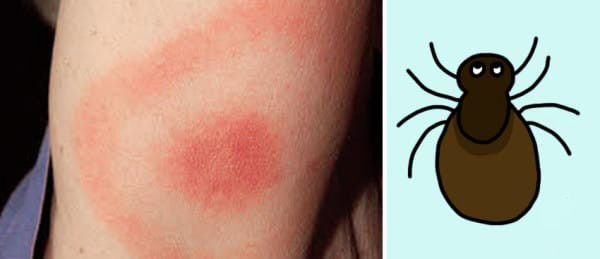
Ticks are exceptionally icky blood-suckers that like to hide in tall grass, or hitch a ride on animals.
They can be warded off with bug spray and clothes that cover skin. Generally, their bite on its own won’t produce many symptoms, but these parasites are often conduits for disease.
If you’ve had a tick bite, make sure to remove the tick’s head and mouth completely and cleanse the area. Then monitor your skin for rashes and signs of infection.
If you notice a distinctive bull’s-eye rash, go straight to your doctor and get tested for Lyme disease.
4. Fleas
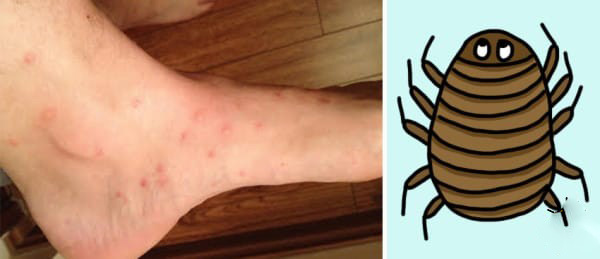
Fleas are more of a nuisance than anything else.
The tiny bugs are almost too small to see with your naked eye, and often travel in animal fur.
They leave small clusters of ferociously itchy welts where they bite, often targeting the ankles and feet because of their proximity to the ground.
Flea bites higher up may be a sign of infestation. Flea bites, like tick bites, are not in themselves dangerous, but they can carry disease.
Watch for signs of infection or fever if bitten.
5. Honeybee
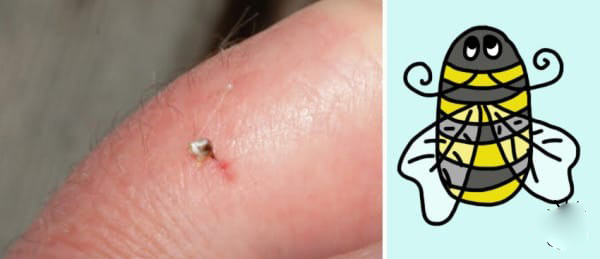
Hearing the buzzing of a bee can be downright scary, but there’s not usually much to fear.
Just keep calm, and most honeybees will leave you alone; stinging kills them, so they only do it as a last resort.
Wasps and hornets are more aggressive, but if you don’t bother them, they usually aren’t interested.
If you do get stung, expect a large painful welt at the affected site. Keep an eye out for allergy symptoms like hives and difficulty breathing, which can be serious, and make sure to carry an EpiPen if you have a known allergy.
6. Mosquito
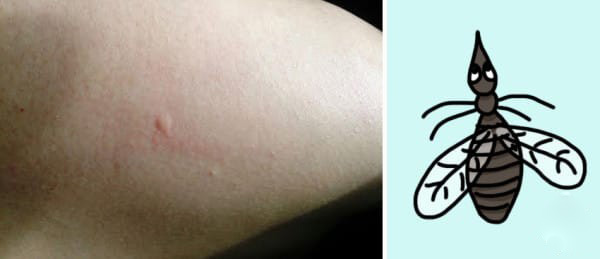
Mosquitoes are some of the most common and most irritating biting insects around.
Almost everyone gets their fair share of mosquito bites in the summertime, which itch fiercely and raise lumpy red spots on your skin, often appearing on legs and arms.
Though they’re a common nuisance and don’t alarm most of us, do your best to keep them at bay with spray, candles, and mosquito nets, since they carry diseases like West Nile, Zika, and malaria, among others.
7. Bed Bugs
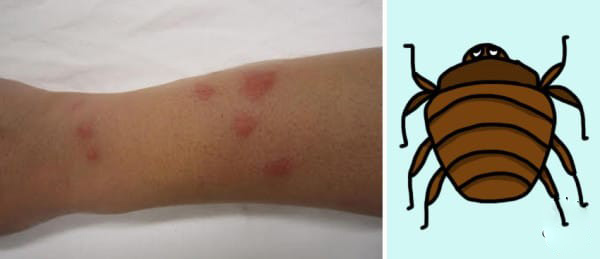
Bed bugs, the most dreaded home invader, usually make their presence known with clumps or lines of red welts that appear first on arms and shoulders.
These bites itch fiercely, and may not show up until a week after bitten.
Though having bed bugs can be traumatic and distressing, they rarely cause medical emergencies. They don’t spread disease, and only get infected through excessive scratching.
The best thing you can do is hold tight, put some calamine lotion on those bites, and call in a professional to take care of the pests once and for all.
8. Brown Recluse Spider
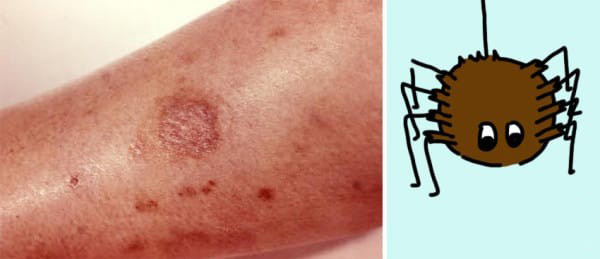
A bite from a brown recluse spider can be a serious medical emergency.
These bites are fairly rare, since this type of spider is nonaggressive and, as noted in the name, prefers isolated spaces with dry rot and dust.
Attics, old barns, disused sheds: all are favorite hangouts for these guys. Bites often aren’t painful, but if you spot brownish-purple spots around the site, go to an emergency room immediately.
These are necrotic lesions, and should be taken seriously and treated immediately.
If all this info makes you want to stock up on mosquito nets and bug spray this summer, be sure to Liked Video this indispensable guide with your friends and family!
